In the 1960’s Vought extensively studied a concept for VTOL propulsion known as ADAM (Air Deflection and Modulation). This used a bank of horizontally oriented turbojets exhausting into a common manifold that formed the main structure of the wing and which drove larger-diameter fans. The exhaust from the jets, and the thrust from the fans, could be directed either aft for forward thrust or down for vertical thrust. Vought proposed the ADAM concept for everything from small single-seat fighters and ground attack aircraft to large military and commercial transports.
A few of these designs are presented below:
A photograph taken in the 1960′s showing a Vought ADAM (Air Deflection and Modulation) VTOL fighter concept display model. ADAM used engines in the wings with thrust deflection to achieve VTOL performance.
Scan made from a slide. No further information on this particular design concept.
More after the break.
————-
A layout drawing of the Chance Vought Corp. V-460, a VTOL cargo plane design from the mid 1960′s. It was unusual in having a tailless configuration similar to some designs put forth by German aircraft designers at the end of the second world war, but with a multitude of fans embedded within the wings. The fans were themselves driven by gas pressure produced by gas generators (read: “small turbojets”) located above the fuselage, and ducted through the wings. With this arrangement, the thrust lines of the engines roughly parallel the center of gravity of the loaded aircraft (when vectored down for vertical thrust). Thus all engines are used for both vertical and horizontal thrust, theoretically making a lighter weight, more efficient propulsion system… at the expense of added complexity in the hot-gas ducting.
A reverse-engineered “blueprint” based on an original provided by Mark Nankivil.
Inboard profile side view. Again via Mark Nankivil.
An inboard top view, showing the substantial ductwork.
A page of illustrations showing the engine operation for vertical thrust for the V-460, compared to several contemporary Chance-Vought designs with wholly different propulsion systems. Note that the V-460 used the most complex system of the bunch, including not only vectoring the thrust from the cold-gas fans, but also using ejector effect to increase thrust from the hot-gas turbojet exhaust. In the 1960′s, the ejector effect was considered very promising, with both the Lockheed “Hummingbird” and the later North American Rockwell XFV-12 built to take advantage of that. But both designs showed the serious limitations of the ejector effect to produce added thrust… while it worked great in subscale models, once scaled up to full size the losses in the system were so bad that it tended to reduce total thrust, not increase it.
——————
Minimal data available on this. Vintage late 1960′s, two seat, with apparently only two Sparrows, two Sidewinders and a 30-mm gun.
Portions of this were originally posted HERE, HERE, HERE, HERE, HERE and HERE.
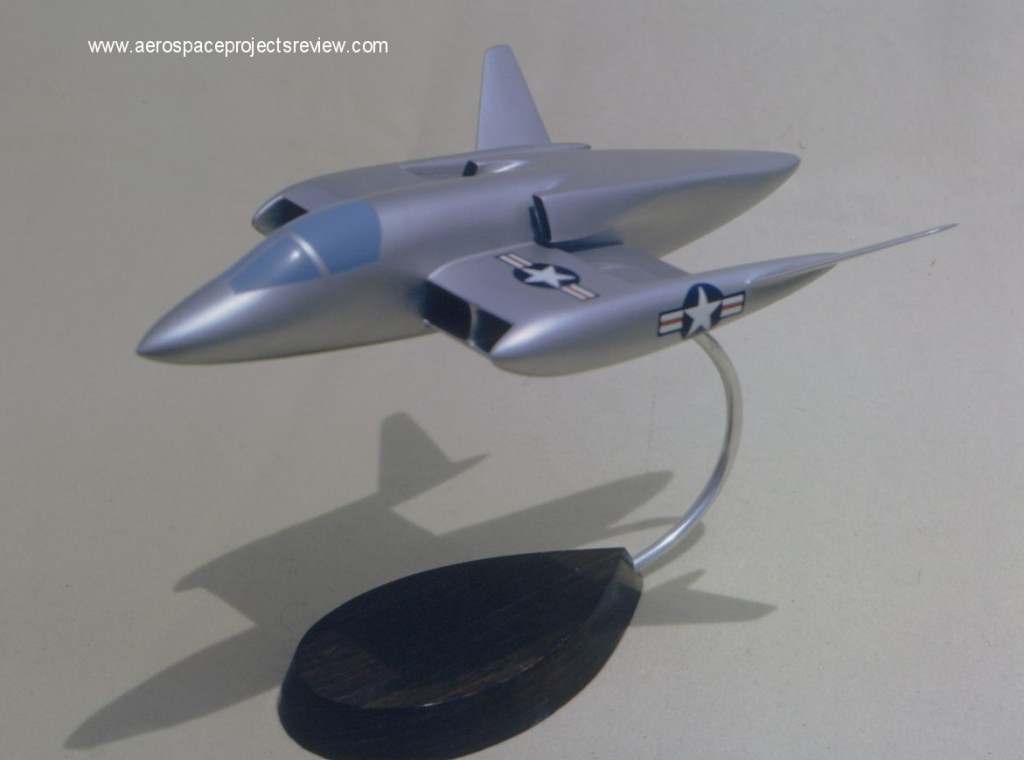
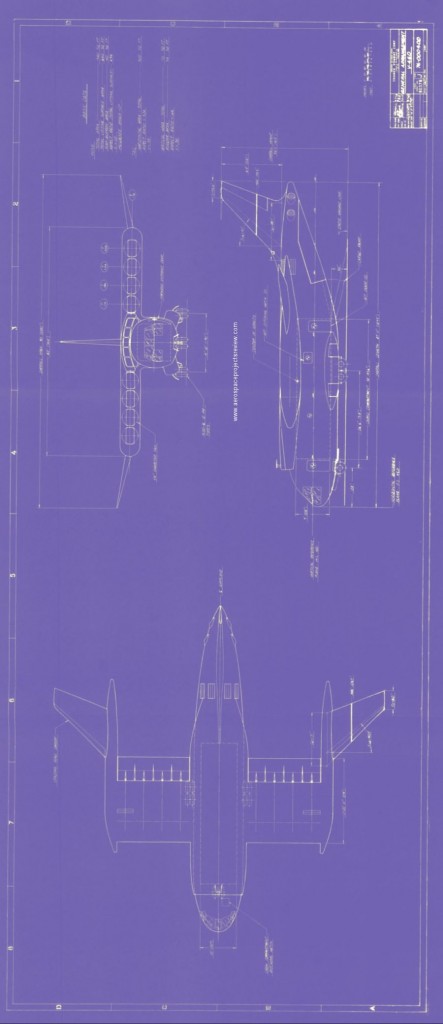
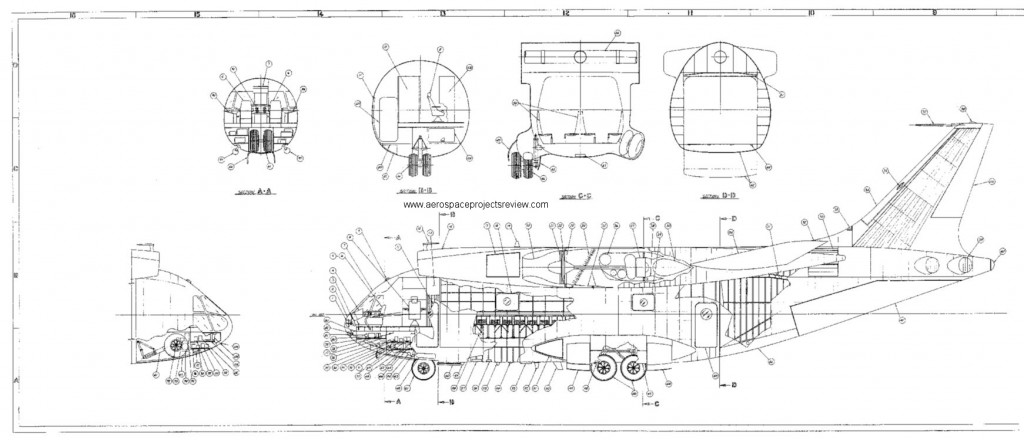
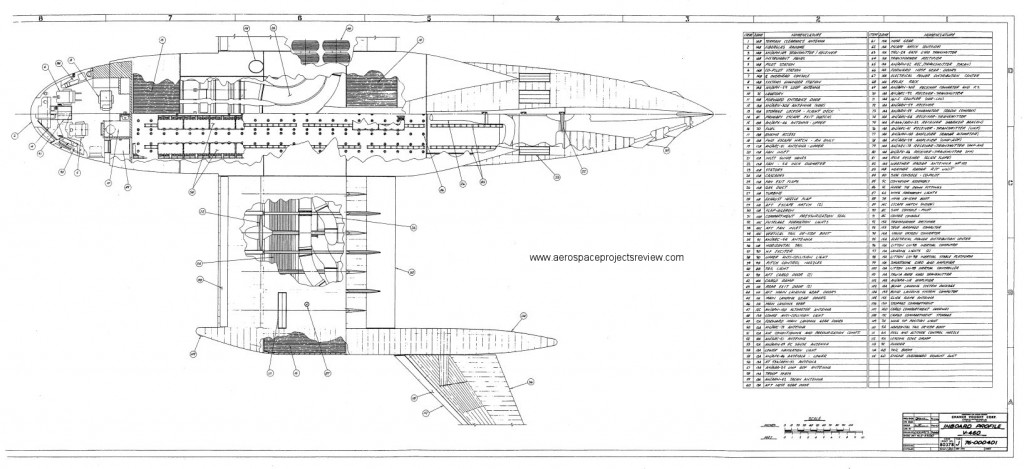
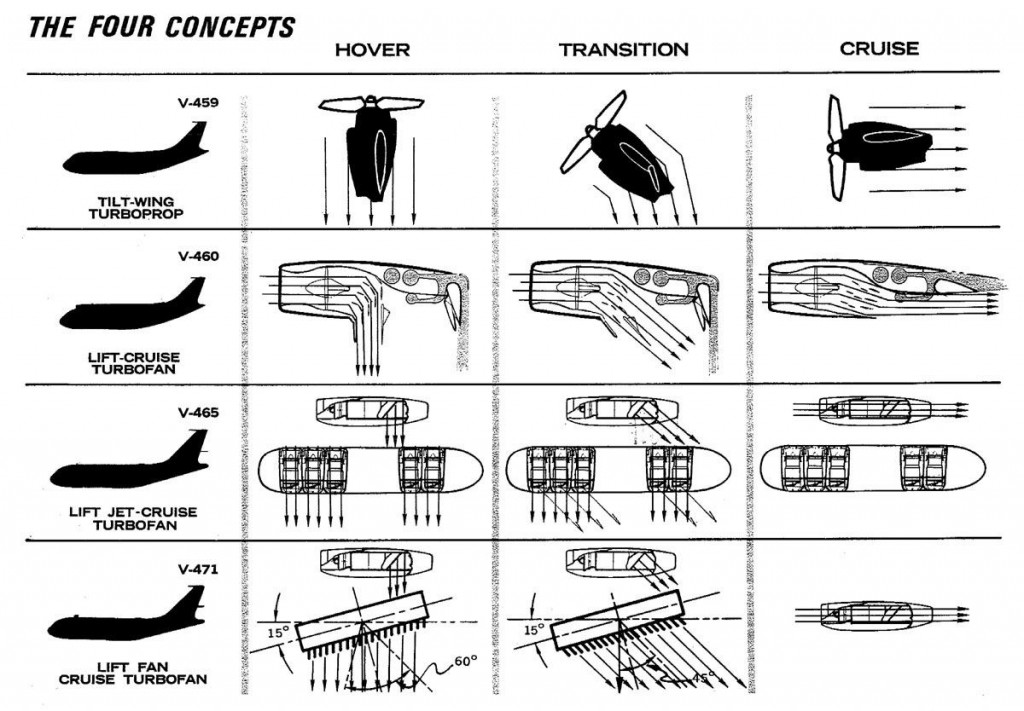
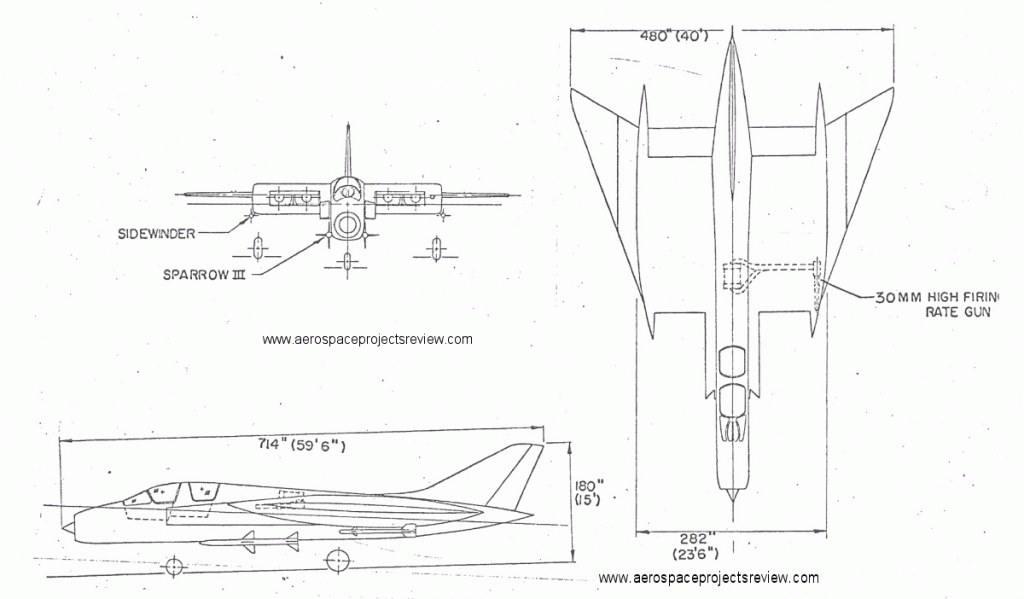
Was the ADAM system viable without the ejector effect as per the V-460 or was that an integral component of all the ADAM designs?